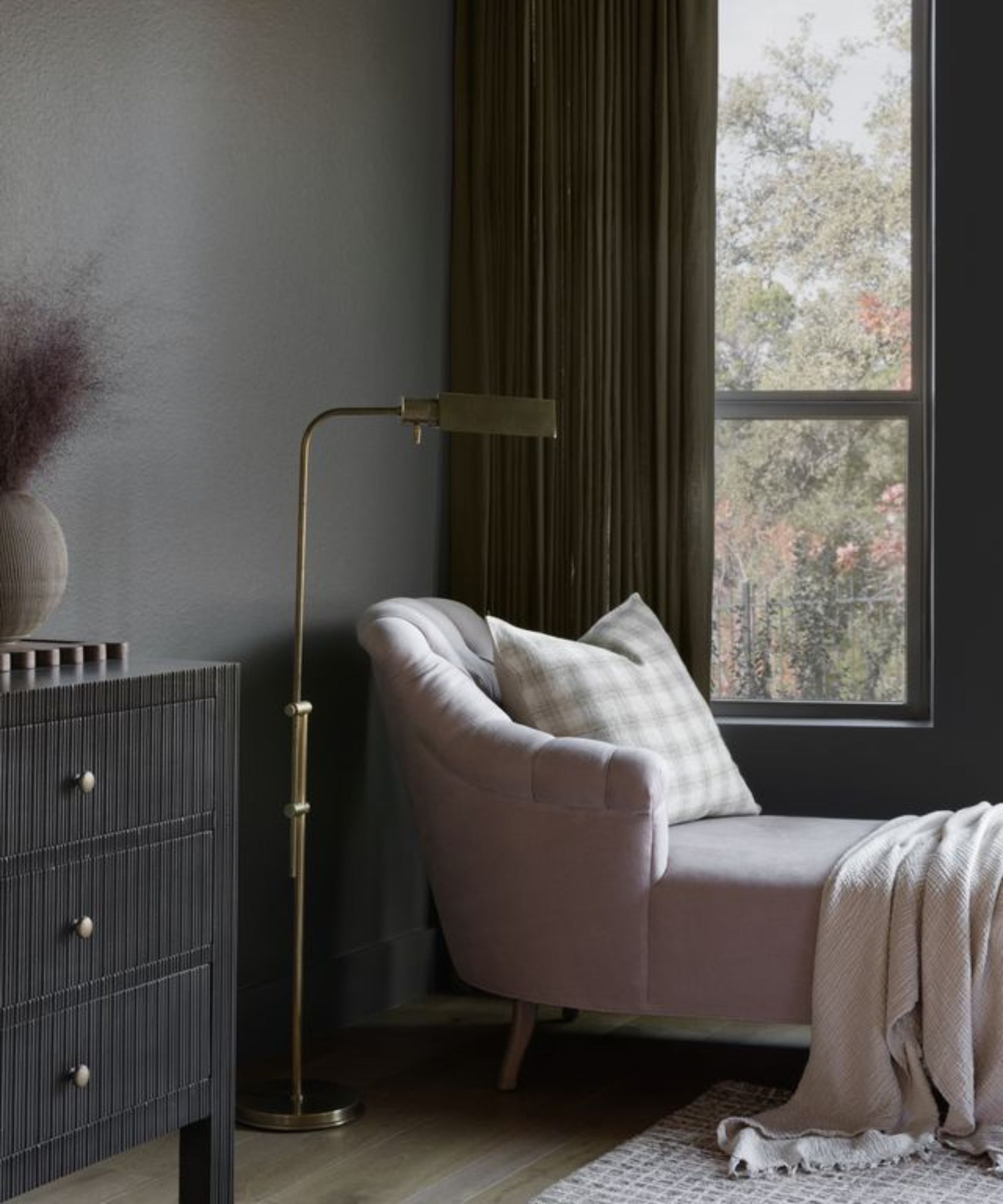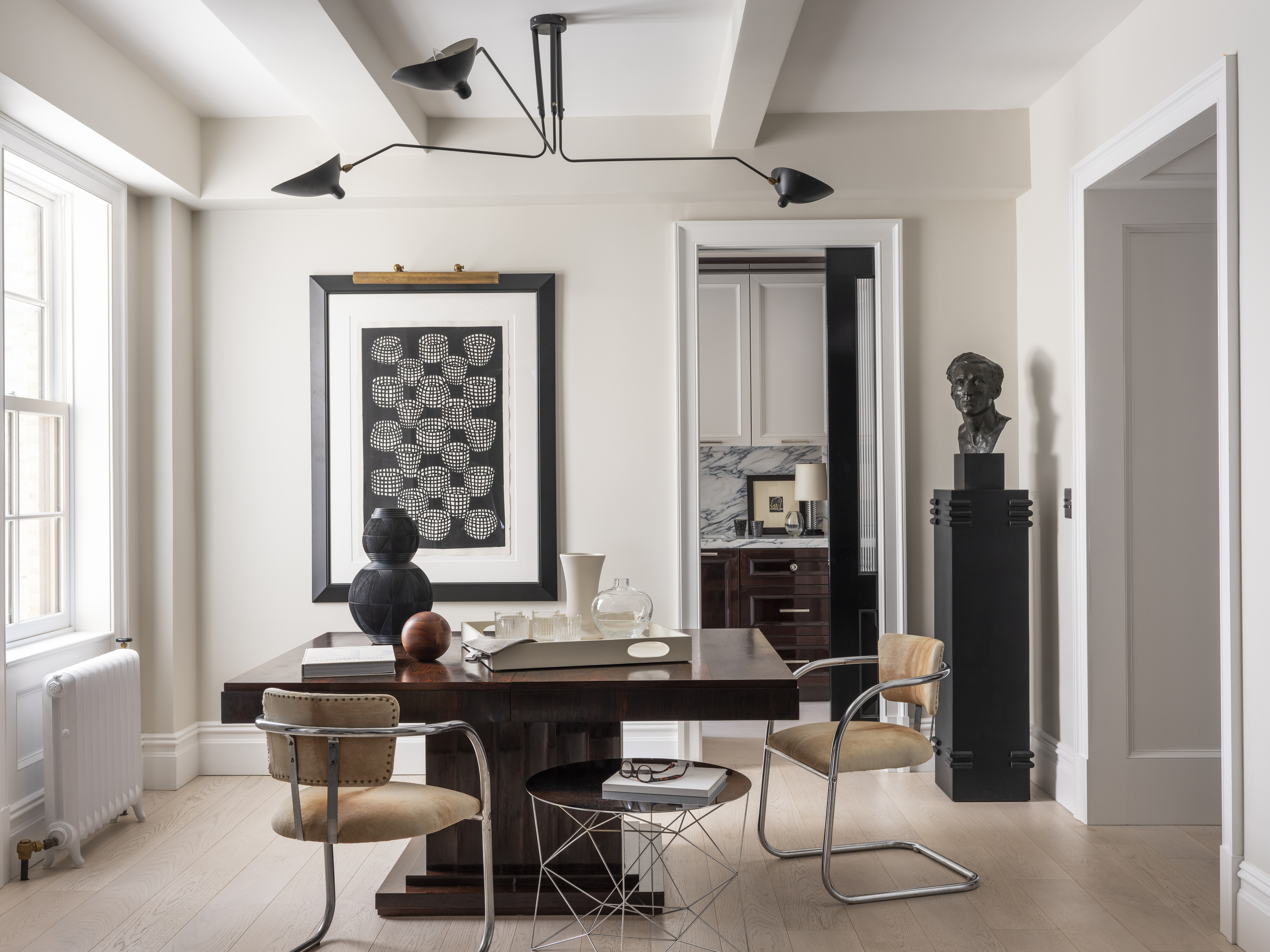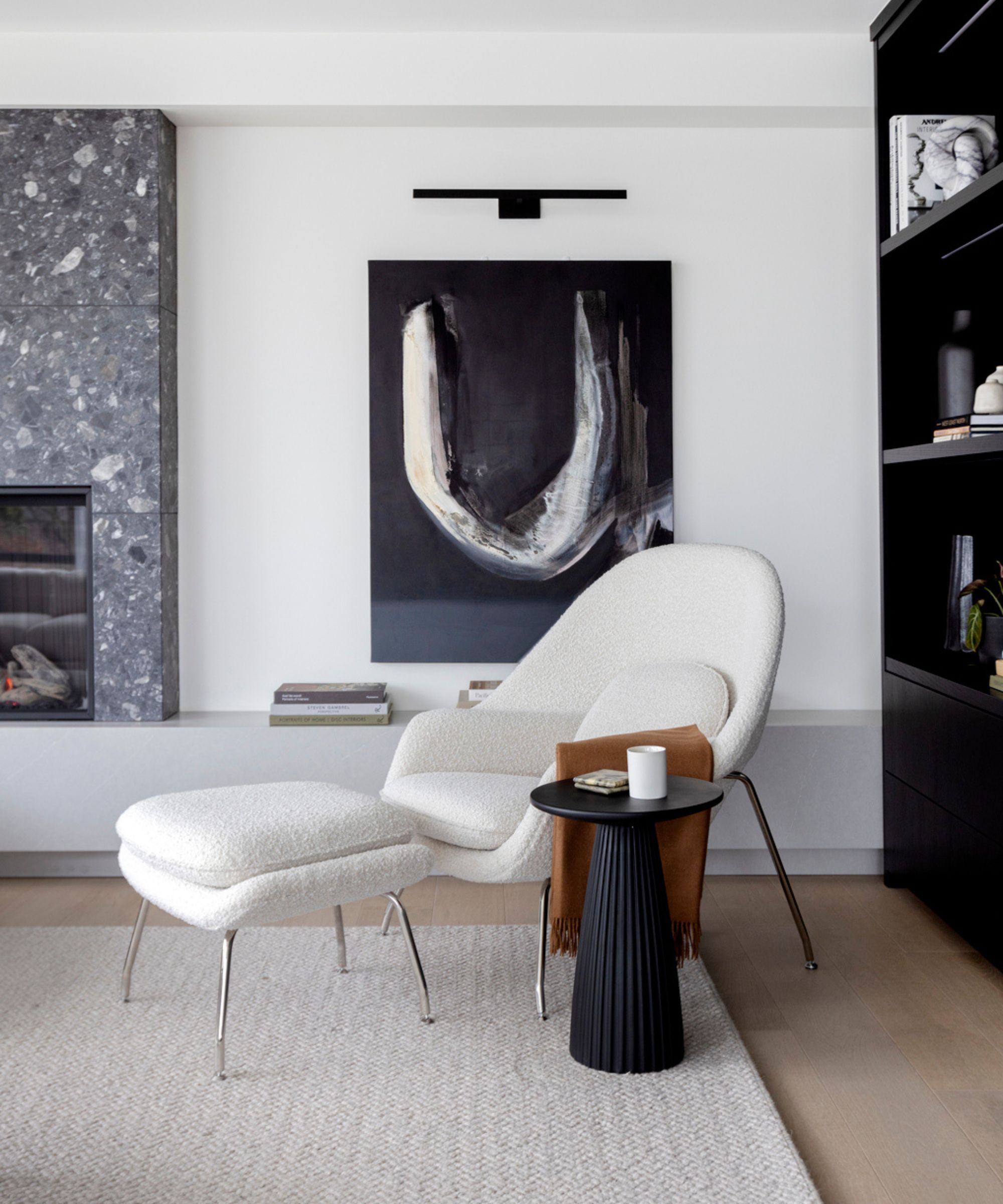
When thinking about how to mix decades in interior design, there is a lot to consider. While room schemes that symbolize a specific period, be it an Art Deco living room or a Mid-Century dining area, are great in providing a coherent space that feels neat, a room that blends timeless interior design styles can feel more personal, eclectic, and interesting.
‘Just like your wardrobe includes new pieces with age-old favorites, so should your interior,’ says Sonya Winner, founder of Sonya Winner Rug Studio.
'Mixing decades helps to create a “lived in” look, a home that has been collected over time and has history and soul,’ says Trish Knight, interior designer and co-founder of Knight Varga Interiors. 'It provides authenticity and comfort, rather than the bland feeling of a perfectly styled space that was all purchased together at one showroom.’
'I absolutely adore merging pieces from various periods; it’s like creating a visual narrative that spans time,’ says Becky Shea, interior designer and founder of Becky Shea Design. Mixing pieces from different decades is essential in creating a truly unique and meaningful design.’
How to mix decades in interior design
There’s no denying that, generally speaking, the quality of furniture was much higher in years gone by, as pieces were well and truly built to last a lifetime and beyond. From solid woods to hardy fabrics, using vintage and antique designs allows you to have high-quality items, and not necessarily at a high cost.
‘Furniture and lighting from past eras were crafted with incredible precision and high-quality materials that are often prohibitively expensive today,’ says Becky Shea. ‘Incorporating these elements into your design not only tells a story but also infuses your space with a palpable sense of history and character.
Whether you’re looking to explore antique shops for the perfect pieces, or you want to add some modernity to heirlooms you’ve inherited, we’re sharing seven top tips for mixing decades in interior design, for a space that’s packed with personality and history, but feels cohesive and functional too.
1. Choose one unifying element – such as color

When mixing furniture and accessories from different decades within a room scheme, a common fear is that the space will appear haphazard, almost like a jumble sale with lots of mismatched items fighting for attention.
A great way to avoid this is to choose one element that will unite your scheme. ‘When using pieces from varying decades, find something that will unite them, for example – color, texture, or shape,’ says Evelina Juzėnaitė, principal interior designer at Planner 5D.
This doesn’t mean that absolutely everything in your room must adhere to this chosen feature, but if 60 percent of your room scheme does, this will create a clear base for your space and make the look feel curated.
‘The goal is that that you don’t want it to look random. One way to achieve this is by keeping a neutral palette so the scheme looks similar throughout the space,’ says Jodi Peterman, owner of Elizabeth Erin Designs. A neutral palette will allow the shapes of your furniture to stand out.
2. Remember less is more

Combining furniture from different decades can mean there are a lot of varying shapes, colors and textures going on. To really embrace and celebrate these differences, consider paring back the volume of things in your room. For example, could you remove a side table, pouf or console table to allow other pieces to take the spotlight?
‘Less is more – choosing one or two anchor pieces to complement accent items is key,’ says Audrey Scheck, designer and founder of Audrey Scheck Design. ‘For example, a modern, fun-shaped sofa paired with a vintage rug gives your room a timeless charm.’
Deciding on one accent piece is a great place to start when planning a room design with various interior design styles. ‘Decide what you want to be the accent in the room, and base further decorations around it,’ says Evelina. ‘For example, in the bedroom, it can be a bed, and in the living room a sofa.’
Then surround this statement piece with items from a different decade – such as an ottoman or coffee table, to create a clear contrast and eclectic feel.
3. Ravamp, revive and recycle

Refreshing old furniture is a great way of merging decades in interior design, and allowing you to keep and maximize the furniture you already have.
‘One way to mix pieces from many different decades within one room, is to keep hold of family heirlooms and repurpose or refinish them,’ says Jodi Peterman. ‘This is a great way to blend your antiques into a more modern aesthetic.’
It’s fairly easy and very satisfying to refresh wooden furniture with paint. But for more complex projects, like reupholstery, you can learn the skill via workshops, or a hire a professional to do it for you.
‘If you’re lucky enough to have an original piece from the 1950s, for example, it is probably in need of some restoration,’ says Trish. ‘When considering reupholstery, look at the fabrics offered by the original manufacturer today – there are great textures like boucle, that have been updated in color and fabric content, but designed to work well with the curves and honor the original design.’
This also has eco-friendly credentials which can go a long way in preventing waste. ‘Finding a trade person who specializes in reupholstery or refinishing is a great way of keeping furniture out of the landfills,’ says Jodi.
4. Consider the scale of your furniture

The size of your furniture can be easily overlooked amidst the excitement of flea markets and antique fairs. However, ensuring that all your pieces of furniture are in proportion with each other and sit at appropriate heights is crucial to the look and functionality of your space.
Questions often asked are should a coffee table be lower than a sofa and how far should your coffee table be from your couch, so it's important to consider measurements and have your ideal sizing in mind before you begin the treasure hunt.
‘A key thing that should be considered when mixing decade styles is scale,’ says Jodi. ‘This is one of the most important aspects when it comes to design because having a piece that is too small in comparison to the other pieces can throw off the entire room.’
Generally speaking, the size of furniture varies depending on the decade, so it’s essential that you get out your measuring tape before you buy a thing.
‘Often antiques are smaller than today’s furniture, so a delicate English armchair could look lost next to a large sectional,’ says Trish. ‘But antique dining chairs could look great with a contemporary clean lined long stone or glass table.’
5. Choose pieces you love

Designing a space that combines pieces from many different eras can feel like a labor of love, it takes time and patience to select pieces of furniture that are different and work well together. So while it is a labor, it’s important to remember that the point of this is to incorporate pieces that you adore in your home.
'I’ve found that the key is simply in sourcing pieces that you love,’ says Dan Mazzarini, Creative Director and Principal of BHDM Design. ‘As a collector myself, I often find myself picking up antiques and thrifts that I’m drawn to even before I know where they will live.’
'You’ll see that most of the finds you pick up have some common thread, and from there, it’s about finding where it fits best within your other prized possessions. This approach will leave you with a curated space that feels incredibly special,’ says Dan.
6. Mid century style is an easy win

Mid-century style is a popular style to include in schemes that blend multiple decades. With its easily recognizable but simple lines, the designs blend seamlessly with both more decorative and other minimalistic styles. ‘The functional design and beautiful lines go well with most styles in the modern world,’ says Evelina.
‘Clients are loving Mid-Century Modern at the moment,’ says Audrey. ‘Characterized by its organic forms and little ornamentation, it's a great way to blend vintage and contemporary beautifully.’
‘The easiest decade of furniture to mix into both traditional and contemporary homes is Mid-Century Modern,’ says Trish. ‘There are iconic pieces, like the Womb Chair (1948), Saarinen Executive Chair (1948), and the Saarinen Tulip Table (1956). These are just as sought after today as they ever been, and for good reason. They work beautifully in today’s homes.’
7. Focus on functionality

As mixing decades in interior design can create quite a busy room scheme with varying styles pulling for your attention, it’s crucial to let the function of your room lead the way when choosing pieces.
‘Focus on functionality, ensuring that each piece serves a purpose and fits into the overall function of the room,’ says Becky. ‘This practical consideration will help the space feel more unified and thoughtfully designed.’
For example, if designing a home office where you need plenty of storage, a beautiful sleek Mid-century style desk might fit in perfectly with your scheme, but if it doesn’t feature built-in drawers or any space to store pens and papers, it will never be truly fit for purpose. Or, if you need a space in the hallway to sit and put on your shoes, that beautiful 18th-century console table will always leave you wanting.
The thrill of finding a piece in a flea market is amazing, but don’t let this override the fact that your space must function and work practically, as well as look beautiful.
Transitional style and mixing eras is a surefire way to create a timeless home. There are a few rules to ensure the look works and doesn't become too chaotic. However, use your instinct too, this layered look is about just decorating in a way that you love and bringing in pieces that mean something to you. If you decorate with that mindset then really you can't go wrong.







